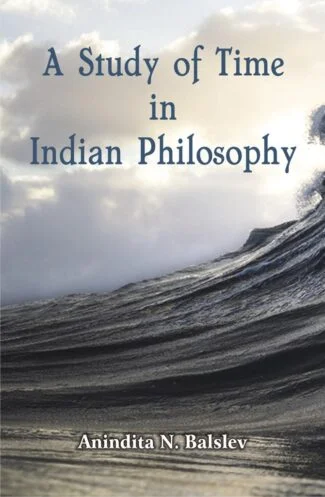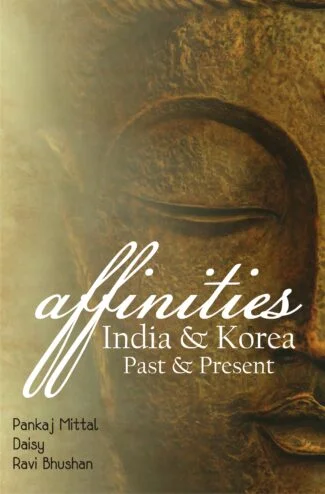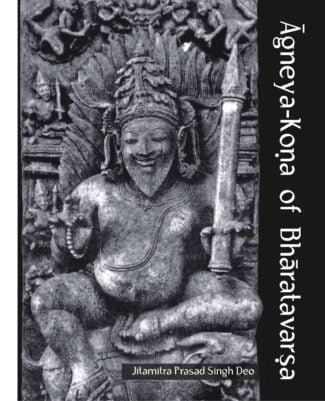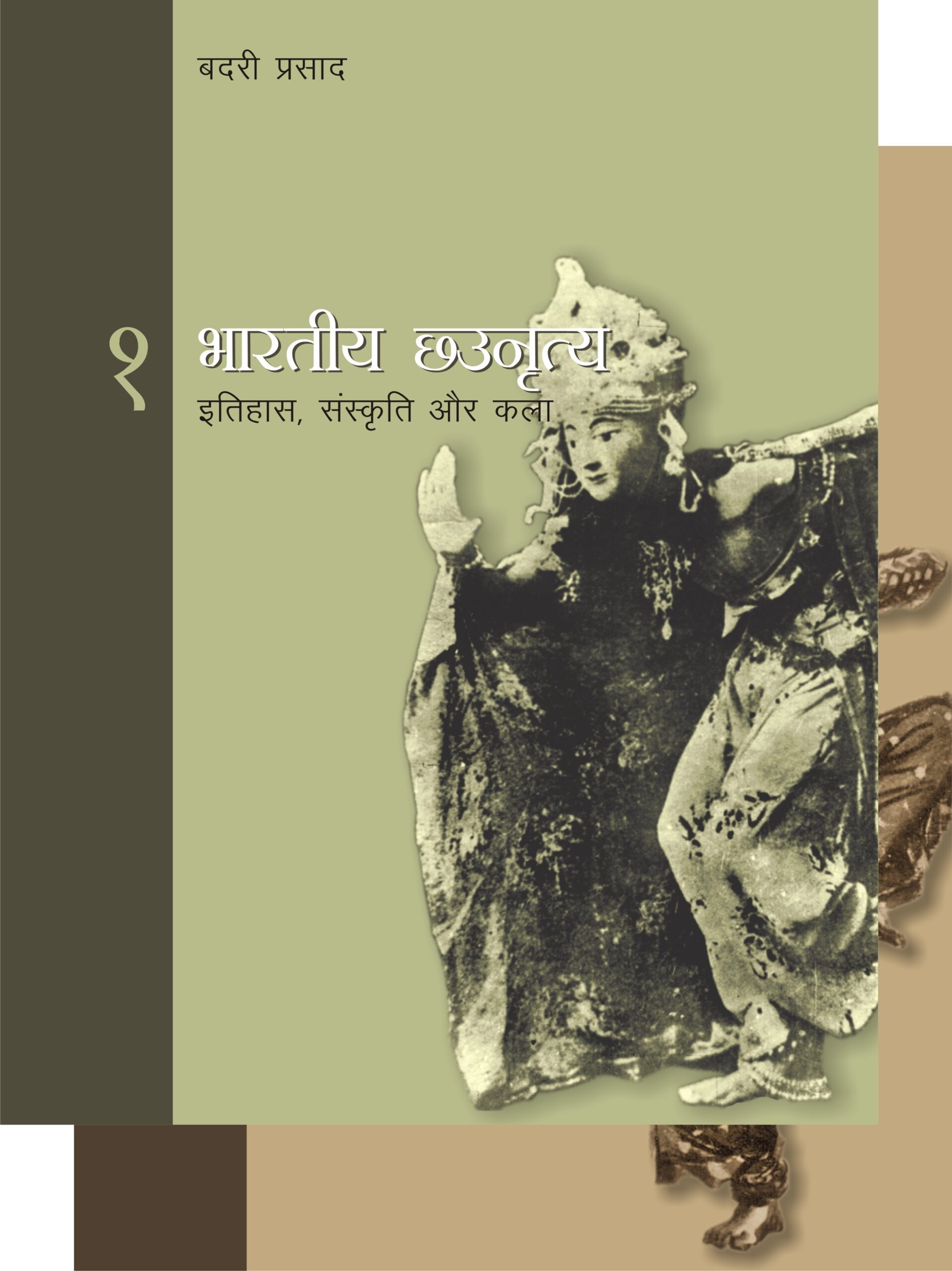Showing 1–12 of 151 results

This book is an authentic study of the distinctly different views on time that have emerged from and have, in turn, shaped the Indian conceptual world. It makes an excellent introduction to the heart of Indian thought. It is considered to be a major contribution as well in cross-cultural philosophical conversations.
This book, based on original sources, is an authentic study of the distinctly different views on time that have emerged from and have, in turn, shaped the Indian conceptual world. Apart from succinctly demonstrating the impact of these views on the exploration and formulation of such basic concepts as those of being, becoming, causality, creation and annihilation, the work has as critics have acclaimed since its first publication successfully shown the simple falsity of such clichés that the Indian view of time is cyclic or exclusively illusory. It has been, therefore, observed that this book makes an excellent introduction to the heart of Indian thought. It is considered to be a major contribution as well in cross-cultural philosophical conversations.
The fascinating world of multiple Bharatas that this book introduces its readers with is that of a perennial tale discovered and created afresh at each juncture of time; at each moment of self-doubt and self-exploration; at each rejoicing of self-discovery and self-recovery. If one does not come across a seamless continuity here, one does not encounter apparent ruptures either. The Bharatas, as narrated here, present us with amazing diversity with palpable consubstantiality expressed in myriad forms and multiple hues; tradition belonging as much to its contemporaneity as to its past; belonging as much to the spokes as to the axle; centrifugal and centripetal at once; a tradition old and new at the same moment of time.
The book is based on the proceedings of a seven-day international conference organized by the Indira Gandhi National Centre for the Arts (IGNCA) on the living traditions of the Mahabharata in the year 2011. The conference explored the multiple tellings and retellings of the Mahabharata story as sung, danced, and celebrated in festivals, inscribed on to geographic landscapes, committed to memory as sacred genealogy, embodied in rituals, and sculpted in shrines and temples. The presentations ranged from issues of poetics and ethics to translations, adaptations, and variations to folk and tribal traditions as sung, recited, and performed. Rather than exploring the Mahabharata as a book or a singular narrative, these papers focus on the multi-tradition of the Mahabharata in all its multidimensionality, multiplicity, and above all, in its fluidity. The book would certainly interest the scholars engaged in the study of the living heritage of Indian epics, folklorists, indologists, and anthropologists.

The book delves deep into all aspects of bilateral relationship between India and Korea on commercial, cultural, economic, educational, historic, language and literature, political, science and technology, and trade. Taking a cue from the socio-economic growth of Korea, it suggests to move up India in its economic ladder to lead Asia from the front.
This volume is comprised of the proceedings of an international conference on IndiaKorea Relations: Past and Present, dealing with India’s relationship with Korea since ce 48. While Buddhism was the amblical cord of Indian relationship with Korea in the first millennium, the end of Cold War has helped to scale up their relations to a new league. Complimenting their bilateral relationship are the Look East Policy of India and the New Asia Initiative of Korea.
These economic giants of Asia have many things in common to share, give and take in the post-colonial era. The rag to richess story of the miracle on the Han River gives impetus to India’s surge in the economic front. From a hermit-kingdom image, Korea now stands tall among the Asian countries with its rapid socio-economic progress and a per capita income of US $ 22,000. Its advancements in education, science and technology, and defence deserve kudos.
The book thus delves deep into all aspects of bilateral relationship commercial, cultural, economic, educational, historic, language and literature, political, science and technology, and trade. Both the countries have experienced drastic economic progress, increase in trade volumes, Korean corporates investing in India vis-
-vis Indian companies in Korea. A target-trading volume of US $ 40 billion by the year 2015 tells a vibrant story. Also, both are committed in making Asia the most happening region.
The book provides a graphic account of all these developments, shedding light on India’s low per capita income of US $ 1,219 and suggesting to put her acts together, to lead Asia from the front.

This book is a study on the cultural developments of Agneya-Kona (the south-east India), where Orissa is the centre, and their contributions to the development of humanity. It studies the rise and spread of different cults and states that the culture of Agneya-Kona was older than the Sumerian Civilization.
The book focuses on the cultural developments of Agneya-Kona (the south-east India) and their contributions to the development of humanity, and highlights the concocted history of Bharatavarsha, especially of Agneya-Kona.
The author projects many artefacts to substantiate his theory. Many archaeological findings Þ the pre-historic rock painting of Gudahandi, images of female figurines, along with circular discs, and nude female figurines are cases in point. Female principle was worshipped in the Mahanadi Valley both in aniconic and iconic forms.
Agneya-Kona has contributed significantly to the growth of the tantric worship. In the pre-historic rock painting of Gudahandi, there is a trace of Yoga, especially Kundalini Yoga. The book details the spiritual and yogic culture of Orissa, the formative phase of Purushottama Jagannatha culture, the impact of Narasimha culture, yoni tantra traditions of the Central Mahanadi Valley and the spiritual relationship of Kalahandi with Candipur Tara-Pitha of Birbhum.
A Sumerian temple that imbibed the form of Lord Purushottama Jagannatha is in highlight, and the author makes a strong statement that the culture of the region is older than the Sumerian Civilization.
The book is a source of inspiration for archaeologists and historians, who want to study more about south-east India, and students, teachers and researchers of arts and culture.
The book aspires to do for Indian poetics what Hudson’s book, An Introduction to the Study of English Literature did for English literature, though in a totally different manner and style. It provides the student with the essential knowledge about almost all aspects of Indian poetics. Based on the original Sanskrit sources, it presents the necessary information lucidly in precise and clear terms. Each chapter is self-contained and complete in itself, with explanatory notes, and a bibliography of relevant works. The Sanskrit terms used in the text are invariably explained or provided with English equivalents.
For quick reference, “A Glossary of Sanskrit Literary Terms” is given in the Appendices, which contain also “A List of Noted Indian Poeticians (including commentators) and Their Works” and “Notes on Major Texts in Indian Poetics”.
This handy volume, with its unique features, will prove invaluable to those who are going to embark on the study of Indian poetics, especially the ones who have no Sanskrit background. To a devoted student, it will prove a useful companion during his/her further studies.
The book aspires to do for Indian poetics what Hudson’s book, An Introduction to the Study of English Literature did for English literature, though in a totally different manner and style. It provides the student with the essential knowledge about almost all aspects of Indian poetics. Based on the original Sanskrit sources, it presents the necessary information lucidly in precise and clear terms. Each chapter is self-contained and complete in itself, with explanatory notes, and a bibliography of relevant works. The Sanskrit terms used in the text are invariably explained or provided with English equivalents.
For quick reference, “A Glossary of Sanskrit Literary Terms” is given in the Appendices, which contain also “A List of Noted Indian Poeticians (including commentators) and Their Works” and “Notes on Major Texts in Indian Poetics”.
This handy volume, with its unique features, will prove invaluable to those who are going to embark on the study of Indian poetics, especially the ones who have no Sanskrit background. To a devoted student, it will prove a useful companion during his/her further studies.

The book examines the affinities and interactions of the peoples who called themselves Arya, that is, the Indo-Aryans and the Indo-Iranians with other peoples and nations of the ancient world. Well-researched and with accurate references to time periods this scholarly work should deeply interest scholars and students of history and anthropology.
In an attempt to explore the ancient history of Central Asia and of the movement of ancient peoples, the work examines the affinities and interactions of the people who called themselves Arya, that is, the Indo-Aryans and the Indo-Iranians, with other peoples and nations of the ancient world, like the Semites, the Hurrians and the Medes. It delves into the processes of acculturation when people of different cultures came in contact with each other at a time that goes back to the very earliest of times (ninth or tenth millennium bce). It examines the movements of the Indo-Aryans and the Indo-Iranians across Asia and their neighbours and active trade partners like the Sumerians, the people of Mesopotamia and the Harappans. It thus throws light on the interactions of the early Indo-Aryans and Indo-Iranians with other flourishing central Asian civilisations of the time. It cites references to ancient traditions that still prevail among peoples in different cultures from different parts of the world, pointing out how these testify to the continuity of ancient traditions and, importantly, the ancient interaction between cultures.
Well-researched and with accurate references to time periods, this scholarly work will deeply interest scholars and students of history and anthropology concerned with the earliest origin of cultures and cultural interactions.

Indian literature abounds in a variety of myths and legends narrating allegorical/historical stories with moral teachings where celestial or semi-celestial beings, in particular the apsarases, occupy an important place. The work examines the origin and development of the institution of apsarases and their characteristics as described in the vast corpus of Vedic, Epic-Puranic and classical works, with a thorough study of the depiction of the legend of the Urvasi and Pururavas.
Indian literature abounds in a variety of myths and legends narrating allegorical/historical stories with moral teachings where celestial or semi-celestial beings, in particular the apsarases, occupy an important place. Of such legends, a few have become much popular and they reappear in the course of the history of literature at various stages. One such legend is that of Urvashi and Pururavas which is one of the most ancient legends of India, owing its origin to the Rigveda. This scholarly work, based on extensive original sources primary, comprising ancient Sanskrit texts, commentaries and glosses and modern literary pieces, kavyas and plays, as well as critical writings on these original works, studies the origin and development of the institution of apsarases and their characteristics as described in the vast corpus of Vedic, Epic-Puranic and classical works. In this context, it undertakes an interesting survey of the concept of nymphs (apsarases) in Indo-European, especially Greek mythology. Dr. Handique then thoroughly examines the depiction of the legend of Urvashi and Pururavas a favourite theme that has been immortalised in literary masterpieces in Indian literature as a whole: from the ancient Vedas and Puranas, the Harivamsha and Vikramorvashiyam to modern works like Urvashi Janani and Abhishapta Urvashi and stray poetic pieces. Presenting a new angle to the study, the book attempts to explore aspects of an age old tradition that bears close affinity with the institution of the apsarases in terms of mode of living worship and ideals like system of the devadasis. The book will prove invaluable to scholars of Indian mythology, culture and literature as well as interest general readers of ancient India’s legends and tales.
The centuries-old exchange of ideas, knowledge systems, resources, skills and materials among the people of the Asian continent left a lasting legacy in various spheres of human experience. This was a dialogue that involved rich exchange of religious, literary, aesthetic and artistic ideas and forms across the regions of Asia. The general impressions of an art, which is spiritual and magical in character, highly charged with literary myths and legends, and presented through a seemingly improvised styles in various art forms, provide us with a clue of an understanding of the fundamental foundations of the arts in Asia.
This volume contains the papers of the panel on ‘Asian Aesthetic Theories and Art Forms’ in first two sections. This panel was a part of the international conference on “Asian Encounters: Networks of Cultural Interaction” held in New Delhi. The volume reaffirms that the Indian theory of art as a creative process and creative expression is broadly true for entire Asian theory of art and aesthetics and it opens up a pan-Asian theory of art and aesthetics.
‘Representation of Asian Art in Asian Museums’ was another panel of the conference. The volume contains three papers from that panel also and the transcript of the dialogue held on ‘Cross Cultural Frontiers in the Study of the Past’.

Chhau is a confluence of classical and folk traditions, having its foundation in martial arts. This second part begins with the art of fighting and then proceeds to survey the historicity of Seraikela, Mayurbhanj and Purulia styles along with the performing style, present-day branches, its condition with the information on the artists and institutions that continue to practise this art form.
Chhau dance has an unbroken relation with the essence of Indian culture. This dance form that flourishes in the forest-areas of Jharkhand, Odisha and West Bengal has already attained widespread acclaim, internationally, as an art. By its distinct confluence of the classical and folk traditions, this art form has carved a niche for itself of being counted as the dance of the traditional and classical discipline. It is based on the foundation of martial art techniques. The most striking features are the multi-coloured, splendid, artistic and attractive masks and magnificent headgears that form part of the decoration and costume design. It consists of dance movements called as nritta-karanas as described in Bharata’s Natyashastra and hand gesticulations as found in Nandikeshvara’s Narityashastra, and is also endowed with varied regional movements of folk forms. This dance form depicts movements of day-to-day activities, gaits of animals and birds, and symbolic gestures accompanied by the war-drums and music giving an experience of the sweet fragrance of the regional music forms. The plot is generally drawn from the Ramayana, Mahbaharata, and various other Puranas and poetry. It is thus a combination of a rich tradition of artistic creativity that has naturally attracted the mind of all age-groups at the national and international arena.
The author has collected authentic information by visiting those places where this dance form is traditionally taught and practised. The author has met the teachers of chhau dance, the designers of masks and costumes, and spent time to gather information to be made available in a single place. In the present text, chhau dance has been presented for the first time elaborately with indepth and authentic details. Along with the presentation of the historical and cultural aspects of chhau dance, its performing aspect, content of plot, costumes, physical gesticulation, instruments and instrumentalists, regional styles, the three distinct styles of chhau its history, folk tradition and other details are elaborated in nine sections. The 200 photographs in this edition reiterate the richness of this art with greater authenticity and thus prove to enliven this traditional art form.
Vol. 1 ISBN: 8124606463, 9788124606469
Vol. 2 ISBN: 8124606471, 9788124606476

This book drives one to the commendable social dignity that women adored during the Vedic period. The values of women were considered holy and pure. Literatures from Vedic period to the British rule glorify women and treat them with high esteem. Brahmavadini Gaargi, Durgavati of Gondavana, Rani Lakshmibai and Ahlyabhai, the towering personalities India, serve as the role model for Indian women and those who are engaged in women studies.
Respecting of women was prevalent in Indian culture ever since the Vedic period. The life values of women were considered holy and pure in those times. In the literature pertaining to Ramayana, Mahabharata, Upanishads, Buddhist, Middle Age and the British times, the highly respectable status of women is clearly shown. How differently were the women viewed at various times in different eras? Which were the women who made a special place for themselves in the different fields of life? In this context we remember Brahmavadini Gargi, Rajmahishi Durgavati of Gondvana, Queen Ahilyabai, Rani Lakshmibai of Jhansi, and some other women for their special contribution in maintaining the high status of women in Indian society.
Portraying the position of women in the ancient period and comparing them to the present times when life is full of struggles, this book becomes a valuable tool for the scholars engaged in women studies and also for the people specializing in Indian traditional culture besides the general readers.

In Hindu Society, Yama is considered the God of Death who is feared. Indians, do not dread death, but instead consider as their body part. This book gives in detail the study of death and its effect on society. The search goes to its roots in the most ancient times.
Yama, in Hindu mythology, is the eschatologist and god of death. And is, thus, dreaded. Even in todays India, there is a fearful hesitancy, if not conscious avoidance, of any talk about him. Yet, paradoxically, the phenomenon of death does not evoke a similar fear in the Indian psyche accepted, as it is, a natural event, a part of life: just like poverty, sickness and old age. Here is an insightful, at once compelling exposition of the phenomenon of death, based on plurimillennial tradition of the Hindus which, despite the affirmation of Western attitudes in certain elitist sections of the urban society, has endured since the times of the Vedas and Indic Civilization. Exploring, contextually, the age-old Indian view of mortal existence: from the very moment of an individuals conception to his/her journey to the Kingdom of Yama through the major phases of birth, growth and ageing, Professor Filippi unveils a complex network of sentiments, beliefs, scriptural references, customs, hopes, ritualistic practices and much else relevant to the great adventure of death. Notwithstanding the sentimental undertones of the mrityu-theme, Dr. Filippis work outstands for its rare scientific objectivity. It has grown from years of his rigorous research effort involving not only his extensive studies of Indian literature: classical and modern, but also his interviews with Indian samnyasins, brahmanas, relatives of the dead, and the persons living around the cremation grounds. Together with visual material, bibliographic references, and a glossary of non-English terms, the book holds out as much appeal to the general reader as to the specialist.